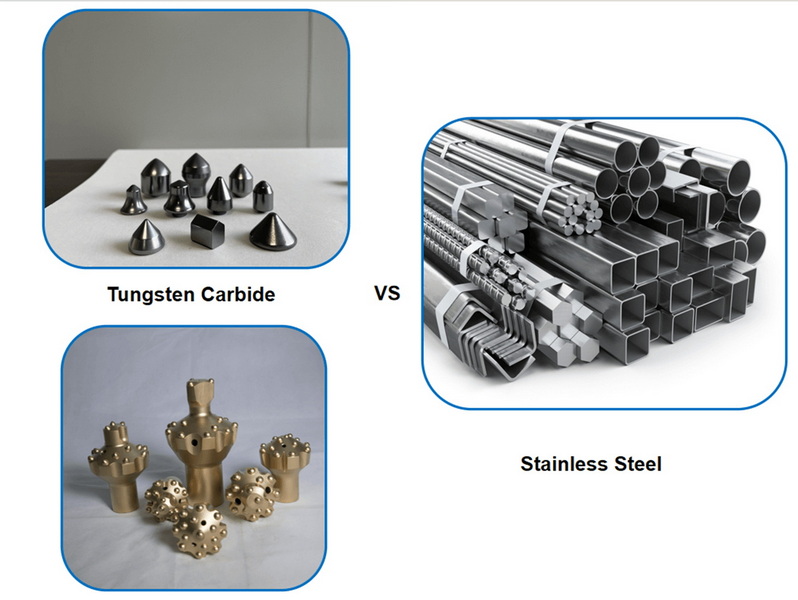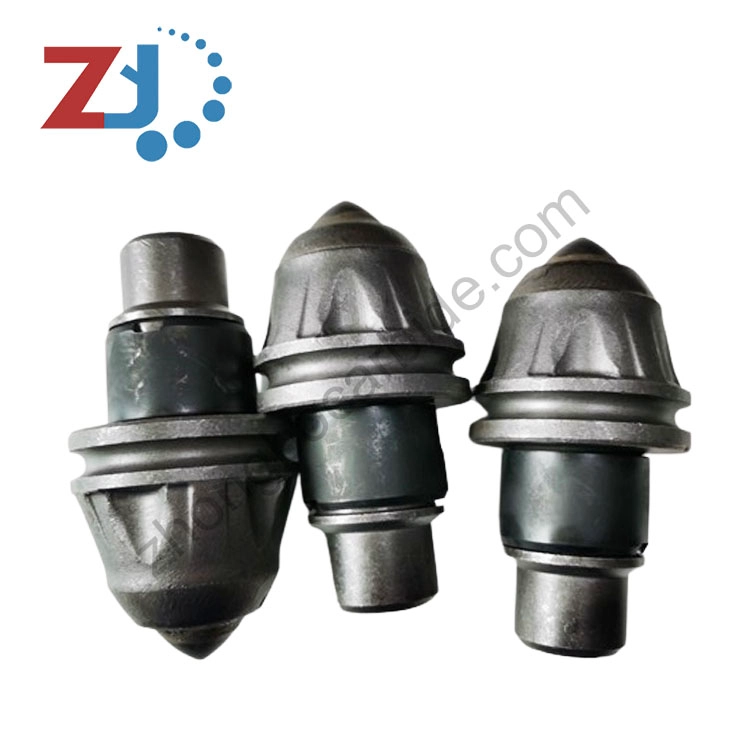Content Menu
● Introduction to Boron Carbide
>> Key Properties of Boron Carbide
● Strategic Benefits of Boron Carbide Production in the US
>> Enhancing National Security
>> Driving Economic Growth
>> Accelerating Technological Advancements
● Boron Carbide Production Process in the US
>> Carbothermal Reduction: The Dominant Method
>> Emerging Production Techniques
● Applications of Boron Carbide in Critical Sectors
>> Defense and Aerospace Innovations
>> Nuclear Energy and Safety
>> Industrial and Emerging Uses
● Challenges in US Boron Carbide Production
>> Raw Material Dependency
>> Energy-Intensive Processes
● Future Outlook for Boron Carbide Production in the US
● Conclusion
● FAQs
>> 1. How does US boron carbide production compare to China's?
>> 2. What is the environmental impact of boron carbide manufacturing?
>> 3. Can boron carbide be recycled?
>> 4. Which US states are hubs for boron carbide production?
>> 5. How does boron carbide improve vehicle armor?
● Citations:
Boron carbide (B₄C), renowned for its extraordinary hardness and lightweight properties, is a cornerstone material in industries ranging from defense to nuclear energy. As global demand surges, the United States has prioritized domestic boron carbide production to secure strategic, economic, and technological advantages. This article examines the multifaceted benefits of boron carbide production in the US, emphasizing its role in strengthening national security, fostering innovation, and driving industrial growth.

Introduction to Boron Carbide
Boron carbide is a synthetic ceramic material with a unique atomic structure that grants it exceptional mechanical and thermal properties. Ranking third in hardness after diamond and cubic boron nitride, it has become indispensable for high-performance applications.
Key Properties of Boron Carbide
- Hardness: 30–35 GPa (Vickers), ideal for armor and abrasives.
- Low Density: 2.52 g/cm³, lighter than steel or alumina.
- Thermal Stability: Melting point of 2,445°C and resistance to thermal shock.
- Neutron Absorption: High cross-section for neutron capture (600 barns for B-10 isotope).
Strategic Benefits of Boron Carbide Production in the US
Enhancing National Security
The US defense sector relies heavily on boron carbide for:
- Ballistic Armor: Lightweight body armor plates and vehicle shielding for military personnel.
- Aerospace Components: Rocket nozzles and turbine blades that withstand extreme conditions.
- Nuclear Security: Control rods and shielding in naval reactors and nuclear power plants.
Domestic boron carbide production ensures supply chain resilience, reducing dependence on foreign sources during geopolitical crises. For instance, the US Army's Next Generation Squad Weapon program incorporates boron carbide ceramics to improve soldier mobility and protection.
Driving Economic Growth
The US boron carbide market, valued at $120 million in 2023, is projected to grow at 6.8% CAGR through 2030. This growth is fueled by:
- Job Creation: Over 2,500 direct jobs in manufacturing hubs like Ohio and Pennsylvania.
- Export Opportunities: The US exports 30% of its boron carbide to NATO allies and Asian partners.
- Supporting Industries: Boost to graphite mining, energy, and logistics sectors.
Companies like 3M and Saint-Gobain have expanded production facilities in Texas and Michigan, invigorating local economies.
Accelerating Technological Advancements
US universities and corporations lead innovations in boron carbide production:
- Additive Manufacturing: Oak Ridge National Lab developed 3D-printed boron carbide components for hypersonic vehicles.
- Nanostructured B₄C: MIT researchers enhanced fracture toughness by 40% using nano-coatings.
- Recycling Initiatives: Startups like Ceradyne recycle boron carbide waste into industrial abrasives.

Boron Carbide Production Process in the US
Carbothermal Reduction: The Dominant Method
The US primarily uses carbothermal reduction due to its scalability:
1. Raw Materials: High-purity boron oxide (≥99%) and graphite are mixed.
2. Reaction: Heated to 2,200°C in electric arc furnaces:
B2O3+7C→2B4C+6CO
3. Post-Processing: Crushing, milling, and sintering to achieve desired grain sizes.
Emerging Production Techniques
To address cost and efficiency challenges, US producers are adopting:
- Plasma-Assisted Synthesis: Reduces energy use by 25% (Argonne National Laboratory).
- Boron-Rich Precursors: Lowers impurities for nuclear-grade B₄C.
- AI-Driven Optimization: Machine learning models predict ideal sintering conditions.
Applications of Boron Carbide in Critical Sectors
Defense and Aerospace Innovations
- Armor Systems: Boron carbide composites protect the CH-47 Chinook helicopter and Abrams tanks.
- Spacecraft Shielding: Used in SpaceX Dragon capsules to mitigate micrometeoroid impacts.
Nuclear Energy and Safety
US nuclear plants use boron carbide in:
- Control Rods: Regulate fission reactions in pressurized water reactors.
- Shielding Panels: Protect workers from radiation in DOE facilities.
The Idaho National Laboratory recently certified boron carbide for next-gen small modular reactors (SMRs).
Industrial and Emerging Uses
- Abrasives: Cutting tools for machining titanium and carbon fiber.
- Medical Devices: Radiation shielding in proton therapy systems.
- Renewable Energy: Wear-resistant coatings for wind turbine bearings.
Challenges in US Boron Carbide Production
Raw Material Dependency
The US imports 65% of boron oxide from Turkey, creating supply risks. Initiatives like the Bipartisan Infrastructure Law aim to boost domestic boron mining in California.
Energy-Intensive Processes
Electric arc furnaces consume 12–15 MWh per ton of B₄C. Transitioning to renewable energy could cut emissions by 30%.
Future Outlook for Boron Carbide Production in the US
- Department of Defense Investments: $45 million allocated for advanced ceramics R&D in 2024.
- Partnerships: Joint ventures between Honeywell and UC Berkeley to refine plasma synthesis.
- Sustainability Goals: DOE targets a 20% reduction in B₄C production costs by 2030.
Conclusion
Boron carbide production in the US strengthens national security, propels economic growth, and fosters cutting-edge innovation. By addressing raw material and energy challenges, the US can maintain its leadership in this critical sector while supporting high-tech industries and global allies.

FAQs
1. How does US boron carbide production compare to China's?
The US leads in high-purity B₄C for defense applications, while China dominates low-cost industrial-grade production.
2. What is the environmental impact of boron carbide manufacturing?
Current processes emit CO, but US facilities are adopting carbon capture and green energy to meet EPA standards.
3. Can boron carbide be recycled?
Yes, companies like Ceradyne recycle scrap B₄C into abrasives, reducing waste by 50%.
4. Which US states are hubs for boron carbide production?
Texas, Ohio, and Pennsylvania host major production facilities due to energy access and skilled labor.
5. How does boron carbide improve vehicle armor?
Its lightweight nature allows thicker armor without compromising mobility, offering 30% better protection than steel.
Citations:
[1] https://www.ehslawinsights.com/2022/04/boron-increase-in-domestic-production-for-important-mineral-on-the-horizon/
[2] https://borates.today/boron-carbide-market/
[3] https://www.tribonet.org/news/high-hardness-boron-rich-boron-carbide-is-synthesized-using-cvd/
[4] https://patents.google.com/patent/US20150299421A1/en
[5] https://www.eag.com/blog/boron-carbide-for-use-in-industrial-and-life-saving-products/
[6] https://www.custommarketinsights.com/report/us-boron-carbide-market/
[7] https://www.gminsights.com/industry-analysis/boron-carbide-market
[8] https://ggsceramic.com/news-item/a-comprehensive-guide-to-boron-carbide-ceramics
[9] https://www.sourcifychina.com/boron-carbide-guide-in-depth/
[10] https://www.linkedin.com/pulse/ultimate-guide-boron-carbide-production-cost-report-amit-sharma-lq5ec
[11] https://ggsceramic.com/by-materials/boron-carbide-ceramic
[12] https://advancedabrasives.com/boron-carbide-ceria/
[13] https://www.innovationnewsnetwork.com/the-role-of-boron-carbide-ceramics-in-modern-defence-systems/42447/
[14] https://www.linkedin.com/pulse/boron-carbide-market-growing-cagr-655-projected-dvs1c
[15] https://d-nb.info/1354419669/34
[16] https://apps.dtic.mil/sti/tr/pdf/ADA504390.pdf
[17] https://www.shutterstock.com/search/boron-carbide
[18] https://insaco.mystagingwebsite.com/material/boron-carbide/
[19] https://www.americanelements.com/boron-carbide-12069-32-8
[20] https://www.eng-tips.com/threads/boron-carbide.23941/
[21] https://www.boroncarbideparts.com/faqs/index.html
[22] https://www.washingtonmills.com/products/boron-carbide-b4c
[23] https://www.futuremarketinsights.com/reports/boron-carbide-market
[24] https://www.globenewswire.com/news-release/2024/06/17/2899791/0/en/Boron-Carbide-Market-to-Keep-Growing-and-Reach-USD-457-84-Million-By-2032-Astute-Analytica.html
[25] https://www.ade.pt/boron-carbide/
[26] https://en.wikipedia.org/wiki/Boron_carbide
[27] https://precision-ceramics.com/materials/boron-carbide/
[28] https://www.mathisfunforum.com/viewtopic.php?id=32098
[29] https://www.vedantu.com/question-answer/which-of-the-following-statements-about-boron-class-11-chemistry-cbse-5ff8a728f0aa372b732a7056
[30] https://www.preciseceramic.com/blog/an-overview-of-boron-carbide-ceramics.html
















